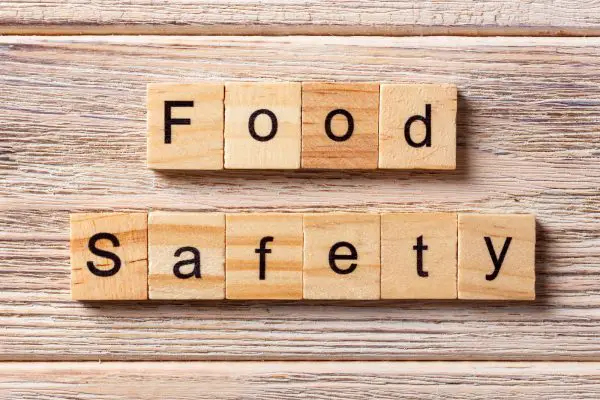
Food safety depends mostly on how the food is stored, prepared and then cooked. However, the focus of this article is the very first step in the entire process – how to store food safely.
For starters, proper food storage may be the hack that you need to ditch food wastage and save some bucks on your monthly expenses.
But, ultimately, it protects you, your family and your guests or customers from food-borne illnesses.
What’s more? There’s hardly anything to gain and so much to lose when you or a loved one goes down with an illness caused by poor food handling and storage.
That being said, one of the things you want to note about food storage is how to classify foods based on their susceptibility to contamination.
High-risk foods, for instance, are those foods that are rich in protein. They include meat, seafood, dairy products, and poultry. These foods have a high chance of getting contaminated and must, therefore, be cooled below 5 degrees Celsius.
Low-risk foods, on the other hand, have lower chances of getting contaminated. Examples include grains, flour, and other foods that have low protein content like honey and oils. The interesting thing about low-risk foods is that once they are cooked they become as susceptible to contamination as low-risk foods (source).
All that being said, this article will help you to improve your food storage game by providing answers to these common questions on food safety:
i. How long is food stored at room temperature safe for consumption?
ii. How cold should a refrigerator or freezer be to keep food safe?
iii. Is it safe to refreeze thawed meat or fish?
iv. How long is food safe in a refrigerator after losing power?
v. What do dates on packed foods really mean?
Table of Contents
How to Store Food Safely at Room Temperature
As with any storage system, the FIFO rule makes it easy to organize foods stored at room temperature and ensure that some items don’t stay longer in storage than they should.
Oh, FIFO means First In, First Out. It is a term commonly used in commercial kitchens to ensure that the first items to go into storage are the first items to be used.
This concept is also useful for smaller kitchens including the kitchen in your home.
The FIFO strategy is used in a bid to ensure that only relatively fresh food items go into the meals.
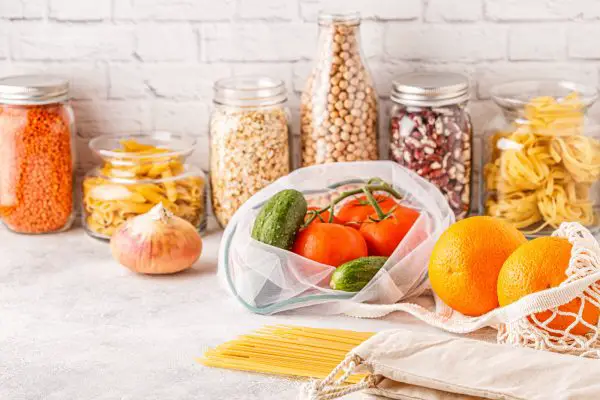
For food items that need to be stored at room temperature, FIFO helps to ensure that newer items are not opened first (source).
For instance, if you have more than one pack of butter open without an increase in demand for it, there’s a high chance that one of them will go bad. So, it helps to use the new one only when the old one has been used up.
Common foods that can be stored at room temperature include:
i. Fruits
ii. Root Vegetables
iii. Freshly baked bread
iv. Grains e.g. rice, quinoa, oatmeal, etc.
You can also keep unopened canned foods in a cabinet at room temperature. These foods will remain safe for consumption as long as the cans are not swollen, leaking, punctured or rusted.
If you notice these signs on any canned food, the safest thing to do is to throw them away (source)
Meanwhile, the dates on canned foods are also very important. We will talk about these dates and their implications later in this article.
How to Store Food Safely in a Refrigerator
Some foods need to be kept at temperatures that are low enough to slow down the rate of bacterial growth in them and keep them fresh.
When it comes to cold storage, the temperature range considered to be a danger zone for foods is between 41 to 140 degrees Fahrenheit. This is why it is important to ensure that your fridge is always set below or at 40 degrees Fahrenheit.
So, it may be useful to keep the temperature in your fridge in check with a digital fridge thermometer.
Even if your fridge has an in-built thermometer, a separate thermometer, more often than not, will give a more precise and accurate temperature reading. So, you may want to consider getting one if you don’t have one already.
Thankfully, fridge thermometers are usually inexpensive and are available at major stores.
Meanwhile, ensure that you refrigerate perishable foods within 1 hour if the ambient temperature is about 90 degrees Fahrenheit and within 2 hours at lower ambient temperatures.
For instance, while canned foods like pickles, soy sauce, and peanut butter are safe to store at room temperature, you will need to refrigerate them once they are opened.
Other food items that need to be kept in a refrigerator include store-bought eggs, milk, and oil-based or vinegar-based food items.
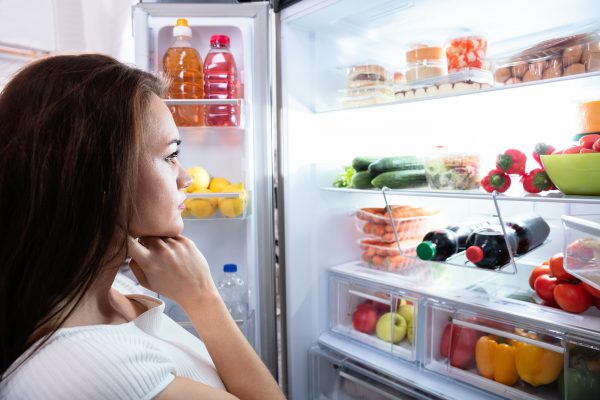
How to Store Food Safely — Best Way to Marinate Food
When it comes to marinating food, the rule is to never marinate at room temperature. The safest place to marinate food is in a refrigerator. This is because germs multiply quickly in fresh foods left to marinate at room temperature (source).
By the way, on some occasions, while taking food in and out of your refrigerator, you may leave spills and drips from thawed foods like meat and poultry in the fridge.
It is important to note that there’s a high chance that the spills may get on other food items and contaminate them or get on the interior parts of the unit and cause bacteria to thrive in it.
Nonetheless, cleaning your fridge regularly will reduce the chances of this happening and will also keep your fridge fresh.
How to Store Food Safely in a Freezer
Just as we mentioned earlier, high-risk foods like milk, fish, eggs, and yogurt are susceptible to contamination. So, they are better off kept in a fridge or better still, in a freezer if they won’t be used within 2 days.
There are only very few items that can’t go into the freezer. But just so you know, you can freeze almost anything including the following foods:
i. Eggs
ii. Fish
iii. Meat
iv. Poultry
v. Yogurt
vi. Milk
vii. Fruits
viii. Vegetables
ix. Cheese
x. Rice
xi. Bread
xii. Leftovers
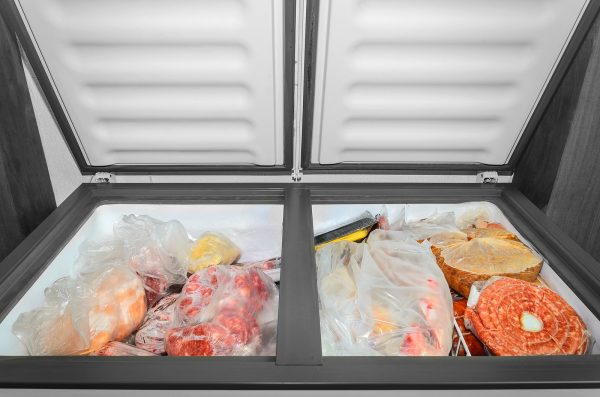
However, irrespective of what you want to place in the freezer, putting the food items in airtight containers or freezer bags is proper food safety practice.
Storing food items like meat and poultry in freezer bags prevents them from drying and causing what is known as freezer burn.
When it comes to freezing food items like juicy berries and other items that may become unattractive when stored in freezer bags, you can have them kept in Tupperware containers or plastics tubs (source).
All that being said, here are a few things to note about freezing foods:
i. It is advisable to freeze your foods in portions. For instance, if you have a small family and need to freeze some fish for later use, it helps to store the fish in portions that will be sufficient for a family meal rather than freezing a whole big fish at once.
ii. If it must go into the freezer, then that item needs to be dated and labeled. This is because without dates it becomes difficult to tell foods apart by how long they’ve been in the freezer when they are frozen. Remember the FIFO concept? Yea, it also applies when it comes to freezing foods; which is where dates and labels will bail you out.
Check out these other in-depth articles/reviews…
- How To Keep Ice Cream Frozen In A Cooler [Detailed Guide]
- Westinghouse 8-Bottle Wine Cooler — Detailed Review
- How Long Does It Take to Defrost a Refrigerator Freezer?
- Tibek 12V Mini Fridge/Warmer with Automatic Locking Handle — In-Depth Review
- How To Change The Water Filter In A Kenmore Refrigerator
- Haier 150-Can Beverage Center — In-depth Review
How to Store Food Safely — Common Foods
There are a million and one foods to consider when it comes to how to store food safely. But knowing how to store the common foods the proper way will guide you on how to store almost any other type of food.
The common foods we considered during our research include fish, meat, poultry, dairy products, eggs, vegetables, fruits as well as leftovers.
Fish
With fish, the first thing you want to check is how good it is before you buy it.
So, how can you tell that fish is good before you buy it?
One of the ways you can tell if a particular fish is good is by how it smells.
Ideally, fish should have a mild but fresh odor. But, if it has a distinct and strong fishy smell, then there’s a high chance that it is not good.
You can also tell that fish is good if it springs back when you touch. Otherwise, it is no longer fresh and may even be bad. If you also notice that touching it leaves your fingerprint on the fish then it is an indication that it is not fresh.
To avoid stories that touch, you want to keep this information at your fingertips when next you go fish shopping.
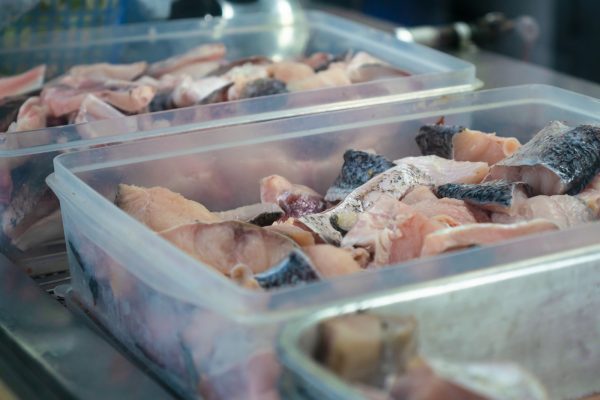
All that being said,when it comes to how to store food safely how can you store fish safely?
Fish spoils really quickly because of its rich protein content. In fact, as soon as the fish dies, it starts to spoil.
This is why it is advisable to ice fish as soon as it dies.
By the way, one general rule of storing fish safely is to have a pound of ice for every 2 pounds of fish that you would like to store.
Keep this in mind the next time you go fishing for dinner.
You can freeze fish in a freezer at 0 degrees Fahrenheit or lower for 4 to 6 months and not longer. Otherwise, it will start to lose its quality.
If you choose to refrigerate fish because you want to use it within 2 days after purchase then it is advisable to place it in the coldest part of the fridge (source).
Seafood
Seafood like prawns, shrimps, lobsters, oysters, and crabs also need some TLC.
So, if you know you will need fresh seafood within 2 days after buying it you can have it stored in the refrigerator. However, if you won’t be using it within this period, then it is safer to wrap it in an airtight food-grade freezer bag or freezer paper and have it stored in a freezer.
The United States Food and Drug Administration has this and even more to say about buying, storing and cooking fish and seafood in this video below:
Meat and Poultry
You can store raw meat and poultry in your refrigerator for 1 to 2 days. But ensure that they are placed at the coldest part of the refrigerator.
Meanwhile, irrespective of where you store these foods, it is highly recommended that you put them in well-sealed containers and place them on the very last shelf in the fridge.
Doing this will contain the juices from the meat or poultry and prevent bacteria from spreading through cross-contamination.
It also helps to follow any label instructions on how to store the meat or poultry while ensuring that you don’t consume it after the ‘use by’ date.
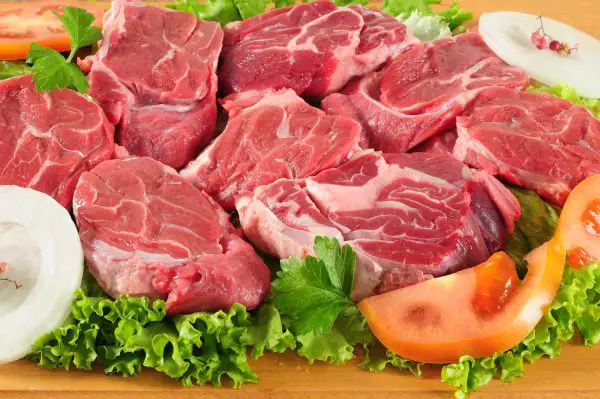
Freezing Meat and Poultry
The following are tips on how to freeze meat and poultry safely:
i. Freeze before their ‘use by’ date.
ii. Defrost thoroughly before cooking.
iii. Defrost in the fridge overnight or in a microwave if you plan to cook it immediately.
iv. Before freezing, wrap meat and poultry properly to prevent freezer burns which may make meat tough and inedible.
Meat or poultry can keep in a freezer for a long time and still be safe to eat. But the longer you have them in the freezer the more the quality deteriorates. This is why it is advisable to consume it within 3 to 6 months after purchase.
However, if you have no other option but to store it for long, marinating with spices and herbs will be useful to improve texture and flavor.
Not sure how long chicken is good for in a refrigerator? You can learn this and more in this detailed article on cold storage for raw or cooked chicken and chicken leftovers.
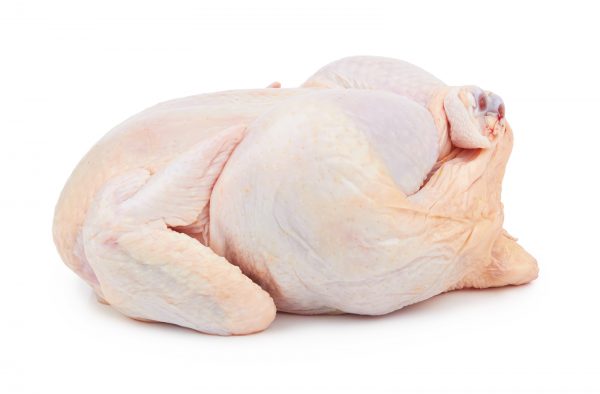
Eggs
Eggs were also one of the common foods we considered in our research on how to store food safely.
The best way to store eggs depends on how old the eggs are.
For instance, freshly laid eggs that haven’t been washed can be kept in an egg rack and placed on a kitchen counter.
So, if you plan to get some from the farmer’s market, then you may want to ask if they’ve been washed as well as any other storage tip to keep in mind.
Store-bought eggs, on the other hand, are usually relatively old and best stored in a refrigerator; where the temperature is constant and the eggs are preserved.
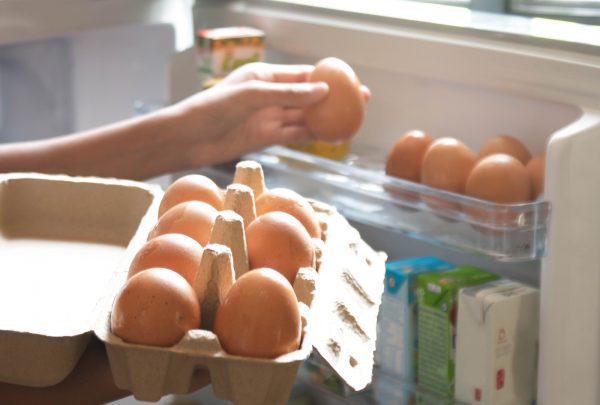
You can also freeze eggs. Of course, not as a whole because freezing them will make them hard and difficult to use when you need them.
But you can freeze eggs by:
i. Cracking the eggs and separating the yolks from the whites. Then, you will need to put the yolks and white in separate freezer bags or food containers and place them in the freezer – eggs stored this way will be useful for baking.
ii. Beating the cracked eggs in a bowl and storing the beat eggs in a container. Then you can place the container in the freezer and freeze – eggs stored this way will come in handy when you need to make scrambled eggs and omelets.
Fruits
Proper fruit storage depends on whether the fruit is already ripe or needs to ripen.
Fruits that need to ripen should be left out on the kitchen counter in an open and loose bag or just on its own. This will promote ripening.
That being said, once the fruit has reached the level of ripeness that you want, refrigerate it to extend its shelf life.
Did you know that bananas produce a substance called, ethylene, which increases the rate of ripening of any fruit that is placed close to it?
Well, it does. And you can make the best use of this property by storing fruits that need to ripen close to a banana.
But whatever you do, never place fruits in air-tight containers or they’ll go bad quickly.
Meanwhile, you also want to look out for bruising, overripe fruits, and any rotten fruits that may spoil other fruits.
By the way, pesky fruit flies are those tiny flying creatures that you need to be mindful of. Often times, the presence of fruit flies may be an indication that one or more fruits are bad or are threatening to go bad.
To avoid or deal with this, we recommend storing your fruits in the refrigerator.
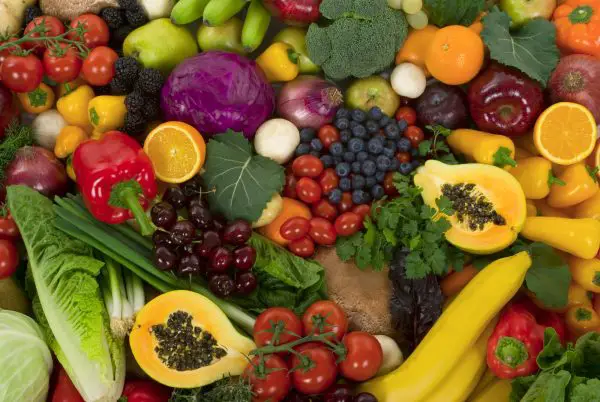
How to Store Fruits In A Freezer
Freezing fruits will depend on what you need the fruit for. For instance, if you are planning to make a pie and will require berries for that, you can add sugar to the berries before you freeze.
You can also skin peaches before you freeze them to avoid the herculean task of getting the skin off the fruit when they are frozen.
However, it is generally advisable to cut fruits into small sizes before freezing them. This will encourage even freezing.
Psst! There’s only so little one can do with a frozen whole apple.
Vegetables
Tomatoes and leafy greens are best stored in the refrigerator when they have been cut.
To extend the shelf life of leafy greens, it is important to wash them and dry them well. Once that is done, wrap them with a tea towel to absorb whatever moisture may be left. Finally, place them in a sealed container and refrigerate.
Meanwhile, except they’ve been sliced, it is not advisable to keep tomatoes in the fridge. This is because the insides of tomatoes turn watery when they are stored as a whole in the refrigerator.
Of course, when this happens the tomatoes will get bad quickly.
So, you may want to slice your tomatoes and place them in a container (preferably plastic) before you keep them in the fridge.
How to Freeze Vegetables
You can also freeze vegetables.
But, first, you must blanch them.
So, experts have advised that rather than cut vegetables before freezing them, cooking them a little before freezing may be a better option – which is what blanching entails.
That being said, unlike most other food types, it is not easy to return vegetables to their unfrozen and natural state. This is why cooking before freezing is a better option.
More so, since they’ve been cooked a bit, you can easily throw the frozen vegetable into your soups and stews or stir-fries without hassles.
Here are a few easy steps on how to blanch vegetables:
i. Cut the vegetables into small sizes (bite-sizes will be perfect) and run them through boiling salty water for, at most, 2 minutes.
ii. Take the vegetables out of the boiling water and throw them straight into a bath of icy cold water. This will shock them to retain their firmness while the boiling water will have only partially cooked them.
iii. You can then place the blanched vegetables in small portions in labeled freezer bags with dates. However, it is advisable to ensure that they are completely cool before freezing them (source).
Root Vegetables
Whatever grows on the ground needn’t be stored in the fridge. This includes root vegetables like garlic, onions, carrots, and potatoes.
These food items should be stored in a cool, dry, and dark place rather than in the fridge.
However, if you must store them in anything, loose paper bags will be fine.
In this video below, Martha Stewart provides insight on how to keep fruits and vegetables fresh. Take a look.
Dairy Products
You don’t want to have to taste bad milk to know that it has gone bad. And it is not just the nauseating smell of spoiled milk that can be nerve-grating. Sometimes, it is the magnitude of the loss. This is especially if what you lost was a lot or if the product went bad at the wrong time.
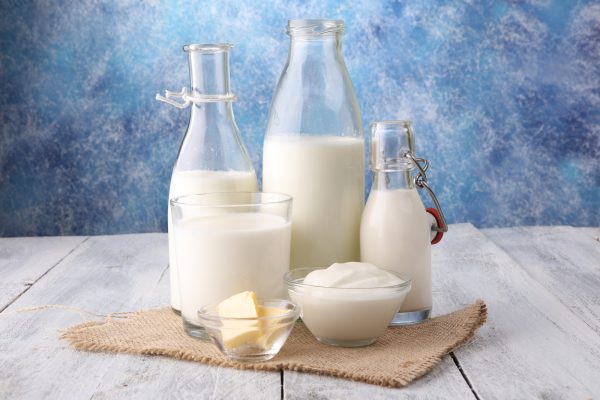
Here are some tips on how to store dairy products safely:
i. Store dairy products at temperatures below 40 degrees Fahrenheit in a refrigerator.
ii. Never store dairy products in the door of the fridge where the chance of exposing the product to warmer air as a result of frequent opening and closing is high.
iii. When you go shopping, buy dairy products last before you head home where they can be stored properly.
iv. Buy milk that comes in non-translucent jugs or cardboard cartons.
v. Irrespective of the kind of milk – whole, low-fat, reduced-fat, etc. – and its date, discard any milk one week after opening it.
vii. Hard cheeses like Gouda, Edam, cheddar, and Swiss should be wrapped tightly and stored in the refrigerator once they are open.
viii. If you notice some mold on a small area of your hard cheese, you can slice off the affected area and the rest of it will be safe for eating.
ix. Use pasteurized eggs for homemade ice cream to extend the shelf life of the ice cream (source).
There’s more to learn about how to store dairy products properly.
This video by Real Simple has a list of up to 22 different dairy products and provides information on how long these dairy products will last in a fridge or freezer. It also provides culinary tips for some of the products.
Check out the video below.
Grains
Dry grains like rice, quinoa, oatmeal, and even dried beans are best stored in tightly sealed containers.
Some of the containers you can use for storing grains are plastic Tupperware containers, glass jars, or any suitable container that has a lid.
Irrespective of what you settle for, be sure to go for a storage container that can cater to how much you plan to store.
By the way, it is useful and economical to ensure that these containers are reusable. You also get to reduce waste and protect the environment by choosing containers of the sort.
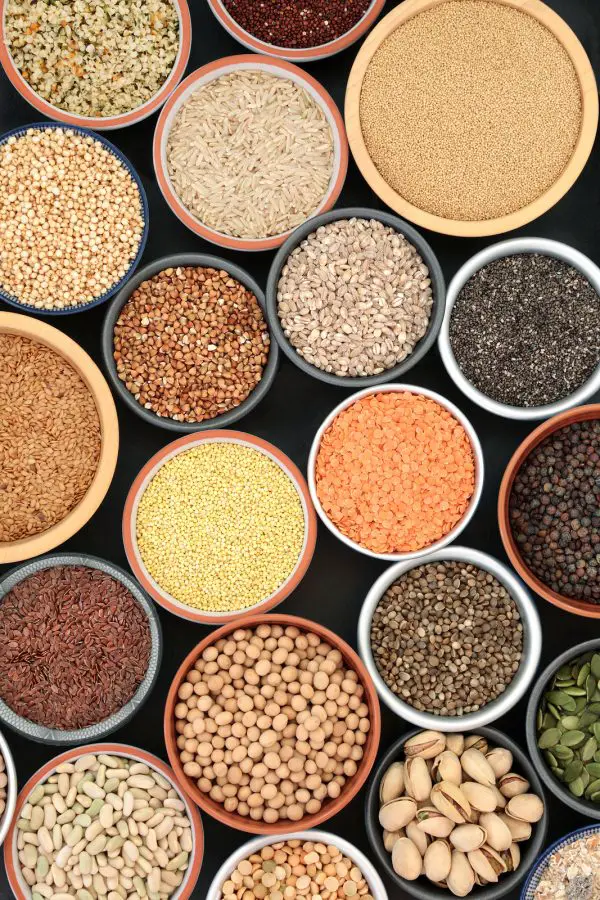
Bread
How should you store freshly baked bread?
If you have just baked some homemade bread, the first thing you want to do is to take it out of the pan and place it on a rack to cool.
Cooling the bread will prevent the bottom from becoming soggy and moist from the heat. However, if the pastries in question are coffee-rich cakes, then you may want to cool the cakes in the baking pan for about 10 minutes so that the cakes won’t start to break (source).
To keep the freshness of freshly baked bread, you can store it at room temperature by removing its wrapper and leaving it out on your kitchen counter.
The reason that it is advisable to remove fresh bread from plastic bags is that plastic bags increase the chances of mold growing on the bread.
Nonetheless, fresh bread properly stored at room temperature is good for 3 to 5 days.
You can also choose to retain the freshness for longer by placing the bread in a freezer where it will be good for 7 to 14 days.
Note: If you live in an area that is usually humid, then you may want to consider storing your fresh loaves of bread in the freezer rather than on the counter. This is because breads will mold easily and quickly if they are left out in such areas.
In this video below, Tech Insider provides answers to the question ‘should you refrigerate bread?‘. Check it out.
Leftovers
Leftovers may be a suitable lunch for another day.
Keeping them will save you some bucks. It will also save you all the time required to make a fresh meal.
However, storing them properly is important for the safety of those who will eventually eat it.
Say you’ve just had a large dinner, a thanksgiving dinner, for example, and there’s so much left from the meals, you shouldn’t keep the leftovers at room temperature for so long.
It will be best to keep them refrigerated or frozen while you decide on when you may need them.
This is an important tip to keep in mind when it comes to storing leftovers safely.
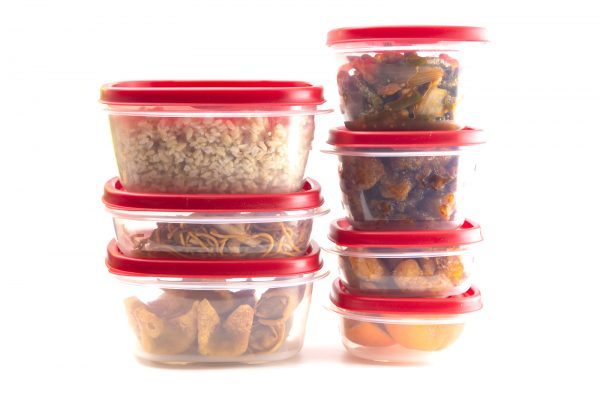
Here are some other important tips on how to store leftovers safely:
i. Separate the leftovers into portions according to food type and keep them in the freezer or refrigerator.
ii. If you decide to keep some leftovers in the refrigerator, ensure that you use them within 48 hours.
iii. When you need to reheat food, ensure that it is steaming hot by heating at 70 degrees Celsius for about 2 minutes.
iv. Defrost leftovers thoroughly in the microwave oven or in the fridge.
v. After defrosting food, ensure that you don’t heat it up more than once. This is because cooling and reheating foods may increase the chances of food poisoning.
How Long Can You Store Food Safely in A Refrigerator?
The length of time for which food is considered safe for consumption in a fridge or freezer varies with the food type.
The chart below by Food Safety.gov provides detailed information on how long specific foods are considered safe in a fridge or freezer:
How to Store Food Safely — Thawing Food Safely
More often than not, frozen seafood, meats, and poultry are usually the only foods that require thawing. Vegetables, for instance, can be cooked without thawing.
But does it mean meats, poultry, and seafood must always be thawed before they are cooked? No.
In cases where you don’t have the luxury of time to thaw frozen foods before cooking, you can actually cook them directly.
On the flip side, cooking frozen foods without thawing will take about 50% longer than cooking foods that were completely thawed before cooking (source).
Here are 3 safe methods on how to thaw food safely:
Thawing Frozen Foods in the Refrigerator
i. Plan when you want to thaw – It takes approximately one day to thaw most frozen foods completely.
ii. Put the frozen food in a container – This will catch and contain juices from the thawed food.
iii. Place the container or plate of frozen food in the last section (bottom) of the fridge.
Thawing Frozen Foods in Cold Water
Thawing frozen foods in cold water is a faster method than thawing them in a refrigerator.
Meanwhile, the choice of cold water and not lukewarm water is because cold water will slow down bacterial growth on the thawed portions of the food being thawed.
The following are easy steps on how to thaw frozen foods in cold water:
i. Put the frozen food in a waterproof and airtight plastic bag.
ii. Immerse the bag of frozen food completely in cold water.
iii. Change the cold water every 30 minutes.
iv. Cook the food immediately once it is completely thawed.
Thawing Frozen Foods in a Microwave Oven
Thawing frozen foods in a microwave oven is the fastest method of thawing foods. However, for safety reasons, if you must refreeze foods that have been thawed with this method, you will need to cook the foods fully before refreezing them.
Follow these steps to thaw foods in a microwave oven:
i. Remove any wrappers on the food.
ii. Place it in a container that is microwave-safe.
iii. Use the instructions on the oven on how to thaw the food – some ovens have specific instructions on how to thaw certain foods.
iv. Cook the food immediately it is fully thawed.
This 3-minute video by USDA Food Safety summarizes all you need to know about how to thaw food safely.
Check it out!
Is it Safe to Refreeze Thawed Fish, Meat or Poultry?
According to the United States Department of Agriculture (USDA), it is actually safe to refreeze previously frozen fish, meat, poultry, and even seafood after thawing; provided the food in question was thawed properly in your refrigerator and not on your kitchen counter.
Again this underscores the fact that frozen foods should never be thawed at room temperature.
So, having debunked the myth about refreezing thawed food and that it is safe to do it, we should also let you know that refreezing thawed food may reduce the quality of food.
This is wholly due to moisture loss from heating and cooling the food.
How To Store Foods Safely — Dates and What They Mean
Have you ever gone into your freezer for some chicken you had only to find out that it had passed its ‘use-by’ date? If you tossed the chicken into the trash can then you have must have the lost some money too.
So, apart from it being annoying, a lack of understanding of what the dates on packaged foods can eventually drill a very large hole into your pocket.
It was even worse off in 2017 when the retail market was swarming with up to 10 different types of dates including ‘Sell By’, ‘Expires On’, ‘Best Before’ and ‘Better Used By’.
Thankfully, two major trade groups, the Grocery Manufacturers Association (GMA) and Food Marketing Institute (FMI) changed all that by streamlining the variety to two common phrases.
So, packaged foods now have either ‘Best If Used By’ or ‘Use By’ dates.
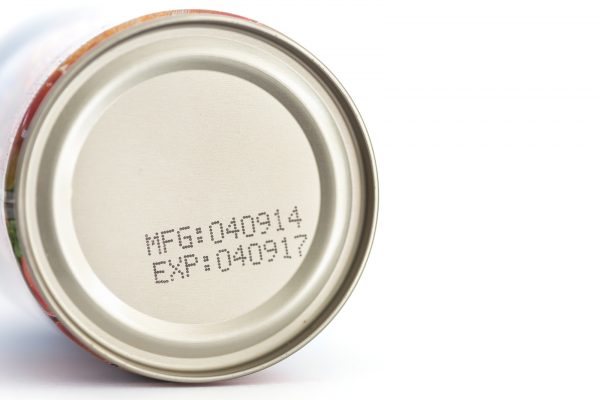
What Does The ‘Best If Used By’ and ‘Use By’ Date Mean?
‘Best If Used By’ dates emphasize the quality of the product to mean that it may not taste as expected, for instance, after the stated date but it is still safe to consume or use.
‘Use By’ dates apply to highly perishable products that pose food safety concerns after a while. Products with this type of date should be consumed by the stated date or tossed into the trash can once the stated date has passed (source).
Keeping these dates at your fingertips is essential if you really want to know how to store food safely.
How Long Is Food Safe In A Refrigerator After Losing Power? – What to Do When You Lose Electricity
There are different reasons why you may lose electricity. And power loss can last for a few seconds to several hours or days. Knowing what to do when you lose power keeps you in the know of how to store food safely.
So, what should you do when you lose electricity?
It is advisable to keep the doors of the refrigerator and freezer closed as best as you can.
If you keep the doors closed after losing power, foods will be safe in a refrigerator for up to 4 hours.
A shut freezer, on the other hand, is able to keep its contents cold for up to 48 hours after losing power.
But as soon as the power is restored, you need to check the food items to determine how safe they are.
Here are a few things to note while checking how safe your foods are after losing power:
i. Check the appliance thermometer in the freezer if you placed one in it before the power loss. If the temperature it displays is at 40 degrees Fahrenheit or lower, the food is safe and can be frozen again. Otherwise, it isn’t.
ii. If there was no thermometer in it, you will need to check each food item to determine its safety. Please note that odor and appearance are not absolute indicators of whether a food item is safe for consumption or not. However, if it still has some ice crystals or is at a temperature of 40 degrees Fahrenheit or lower, then it is safe.
This video from the United States Food and Drug Administration (FDA) will guide you on what to do and how to store food safely after losing power:
How to Store Food Safely — A Quick Recap On Food Storage and Preparation
i. Always wash your hands thoroughly before handling foods.
ii. Wash meal prep and cooking surfaces like cutting boards clean after every use to avoid cross-contamination.
iii. Ensure that your fridge always cools at 40 degrees Fahrenheit or below and that your freezer cools at 0 degrees Fahrenheit or below.
iv. Use the first in; first out principle to ensure that the older stock is used up first.
v. Never store uncooked foods like fish, meat, and poultry above ready-to-eat foods in your fridge to prevent juice spills from the uncooked foods that can cause bacterial growth.
vi. If it grows on the ground, store it unwrapped in a cool and dry place.
vii. Marinate in a fridge, not at room temperature.
viii. If you’ve defrosted and reheated food that was previously frozen, that food is only safe for consumption within 24 hours of complete defrosting.
ix. Cool leftover meat and any item that contains meat to room temperature before refrigerating. If you don’t, the heat will cause condensation that will make the meat spoil quickly.
x. If you decide to thaw frozen desserts and ice cream completely, don’t return them to the freezer.
xi. Thaw only as much frozen food as you will be able to use within 24 hours.
Now that you know how to store food safely, you can now adjust your storage and cooking practices to ensure that they are safe for you, your family, customers, guests, and anyone else who has the privilege to enjoy the benefits of your culinary skills.
But before you go, we will like you to take advantage of the 25 brilliant food storage ideas shared by Natural Health Remedies in the video below:
Pingback: How To Get Fish Smell Out Of Your Refrigerator
Pingback: How Long Will A Refrigerator Stay Cold Without Power?